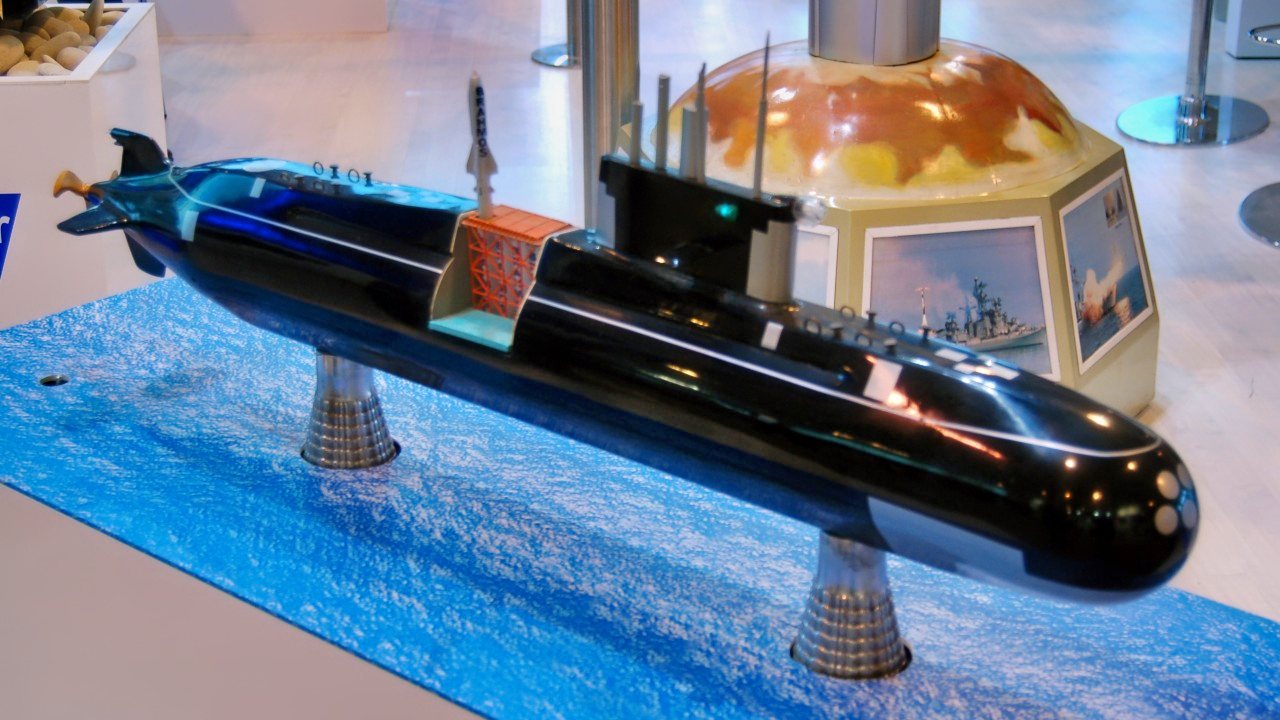Key Points – Russia’s Lada-class (Project 677) diesel-electric attack submarine, intended as a stealthy, advanced successor to the Kilo-class since its 1997 inception, has endured a deeply troubled development history.
-Plagued by performance issues, including propulsion inefficiencies and the failure to implement its planned Air-Independent Propulsion (AIP) system, only a handful of boats have been completed, with the lead boat, Sankt Peterburg, already decommissioned.
-Despite design goals of enhanced stealth and versatility with Kalibr/Club missiles, the Lada’s protracted development and technical difficulties mean Russia continues to rely heavily on upgraded Kilo-class submarines, leaving the Lada’s future role uncertain.
Lada-Class in 4 Words: It Looks Like Failure
The Lada is a class of non-nuclear attack submarine developed and used by the Russian Navy. These submarines are quick and equipped with a powerful set of armaments, making them a significant threat naval vessel of all kind. However, the Lada-class’s design history was fought with many challenges and technical difficulties. With the Russian Navy only recently laying down its third boat in the series despite being planned back in 1997.
Design and Specifications
In terms of technical specifications, the Lada-class submarine has a surfaced displacement of approximately 1,765 tons and a submerged displacement of around 2,700 tons. It measures about 72 meters in length and has a beam of 7.1 meters.
The propulsion system is diesel-electric, featuring an electric motor powered by permanent magnets, which contributes to its low acoustic signature. The submarine can reach speeds of up to 10 knots on the surface and 21 knots when submerged.
It has a range of about 7,500 nautical miles at a submerged speed of 3 knots and can remain at sea for up to 45 days. Its test depth is around 300 meters, and it typically carries a crew of 35.
The Lada-class is armed with six 533 mm torpedo tubes and can carry up to 16 torpedoes, 44 mines, or a combination of torpedoes and cruise missiles such as the Kalibr or Club systems. These weapons enable it to engage a variety of targets, including enemy submarines, surface ships, and land-based installations.
The submarine is also equipped with the Litiy combat information control system and a sophisticated sonar suite that includes bow, flank, and towed array sonar systems.
The Lada’s Complicated Design History
The development of the Lada -Class began in 1990s, a period marked by economic hardship and military restructuring in Russia. These social and political issues contributed immensely to the Lada-class how turbulent history. The Russian Navy sought to develop a submarine that could operate effectively in both coastal and open-sea environments. The Lada-class was also designed with export potential in mind, with the export variant known as the Amur-class (Project 1650). The design emphasized stealth, automation, and versatility, aiming to replace its aging Soviet predecessors, namely the Kilo-class submarines.
Despite its promising design, the Lada-class had a troubled development history and nearly got canceled entirely. The lead boat, B-585 Sankt Peterburg, was laid down in 1997 and launched in 2004, but it did not enter limited service until 2010.
Even then, it was not fully accepted into operational service due to significant performance issues. These included propulsion inefficiencies, inadequate automation, and acoustic performance that did not meet expectations. One of the most significant setbacks was the failure to implement the planned Air Independent Propulsion (AIP) System. Although there were efforts to develop an electrochemical hydrogen generator, no Lada-class submarines seem to have been equipped with AIP as of 2025, although reports conflict on this.
These issues led the Russian Navy to pause the program in 2011 and reconsider its future. The lead boat was retained primarily as a test platform, and construction of additional units was temporarily halted.
However, in 2012, the program resumed after some improvements were made. Progress remained slow, and as of 2025, only three Lada-class submarines have been completed. Of these, one is active, one has been retired, and two are under construction. The lead boat, Sankt Peterburg, was officially decommissioned and slated for scrapping in 2023 due to the high cost of modernization. The other boats, Kronshtadt and Velikiye Luki, have seen incremental improvements, but the class supposedly still lacks the AIP capability that it was supposed to have from the very beginning.
The Lada-Class’s Uncertain Future
Originally, the Lada-class was intended to play a key role in Russia’s conventional submarine fleet, particularly in regions like the Baltic Sea, Black Sea, and Arctic. However, its troubled development has forced the Russian Navy to continue relying on the upgraded Kilo-class submarines, specifically the Project 636.3 variant. These submarines, while older in design, have proven to be reliable, cost-effective, and capable, and they remain widely deployed.
When comparing the Lada-class to the Kilo-class, it certainly has its share of advantages. The Lada-class is slightly smaller in terms of displacement but offers similar speed and range. It was designed to be quieter and more advanced, but in practice, it has taken continuous upgrades and modernization to finally meet this original goal.
The Kilo-class, particularly the Project 636.3 variant, continues to be a workhorse for the Russian Navy and remains in production and service.
Despite its setbacks, the Lada-class program has not been entirely abandoned. Russia continues to work on the Lada-class with the next boat in the series planned to be commissioned sometime this year.
Additionally, the lessons learned from the Lada-class are expected to inform the design of future submarines, such as the upcoming Project Kalina. However, given the economic constraints, international sanctions, and technological hurdles facing Russia’s defense industry, the future of the Lada-class remains uncertain. It may end up serving more as a transitional platform than a mainstay of the fleet.
About the Author:
Isaac Seitz, a Defense Columnist, graduated from Patrick Henry College’s Strategic Intelligence and National Security program. He has also studied Russian at Middlebury Language Schools and has worked as an intelligence Analyst in the private sector.
Military Matters
Russia’s Su-57 Felon Stealth Fighter Is a Waste of Rubles










